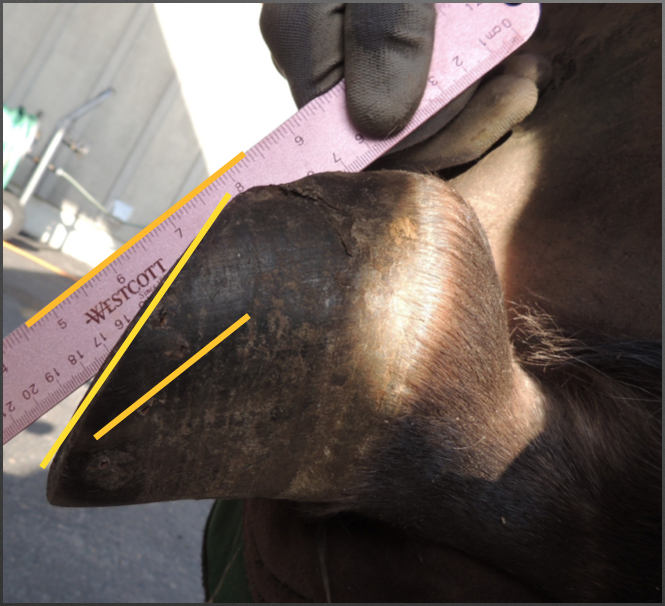
Figure 1
Do you find that you’re curious about the palmar angle of the third phalanx, but radiographs aren’t available?
Bow, Wash., farrier Shane Westman offers a tip that he learned at a clinic conducted by Hall Of Fame equine veterinarian Ric Redden of Versaille, Ky.
“The central sulcus of the frog is a pretty good indicator of the palmar angle of P3,” Westman says. “When I lay a straight edge down the central sulcus of the frog (Figure 1), that gives me a fairly decent indicator that we have some trouble in that foot. It’s a very helpful tool if it’s an otherwise good-looking foot.”
Adds Redden, “This works pretty well when the central sulcus is deep within the frog.”
Although the straight edge is a good indicator, you shouldn’t rely on it. Yet, this tip might prove more valuable for demonstrating to horse owners that radiographs are necessary.
There is yet another external landmark that could prove valuable.
“Another very good reference is to sight an imaginary line through the little protruded bump that is at the skin/frog junction to the apex of the frog,” Redden explains. “This line is parallel to the palmar rim of the coffin bone wings. When vets are taking lateral views for farriers, a dot of radiopaque paste on this spot and one on the apex of the frog helps all concerned to train the eye for useful landmarks. However, farrier friendly radiographs hold a world of information other than just the palmar angle for farriers.”
Be sure to involve a veterinarian and have radiographs taken if you suspect problems inside a foot.
Do you have a helpful tip you would like to share with other farriers? Send them to Jeff Cota at jcota@lessmedia.com.







Post a comment
Report Abusive Comment